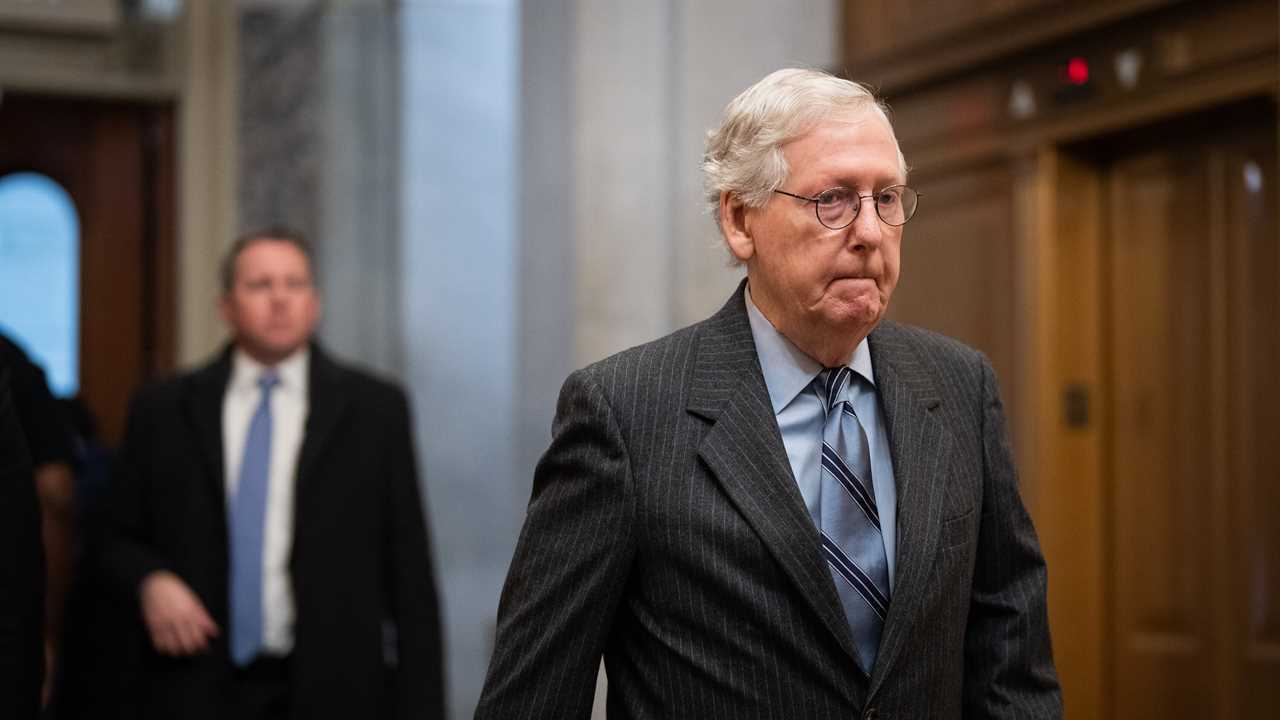
WASHINGTON — Congressional leaders in both parties reached a deal on Tuesday on a bill that would allow a swift increase in the debt ceiling amid a Republican blockade, agreeing to attempt an unusual maneuver that could avert the threat of a first-ever federal default.Speaker Nancy Pelosi of California, who called raising the limit “an imperative,” announced a House vote on the measure in a letter to Democrats after days of quiet bipartisan talks to resolve the stalemate. Its passage was not guaranteed in the evenly divided Senate, where Republicans have for weeks refused to let Democrats take up any bill to provide a long-term debt-ceiling increase, but Senator Mitch McConnell of Kentucky, the minority leader, signaled that it was a solution that he and his colleagues could accept.The Treasury Department has said that it could breach the statutory limit on its ability to borrow to finance the federal government’s obligations soon after Dec. 15 without congressional action, which would lead to a catastrophic default that could wreak havoc on the U.S. and global economies.The measure would create a special pathway — to be used only once, before mid-January — for the Senate to raise the debt limit by a specific amount with a simple majority vote, allowing Democrats to steer clear of a filibuster or other procedural hurdles so that Republicans would have no means to block it.Democrats are likely to choose a number that would keep the government from reaching the new debt ceiling before the midterm elections next year, but senior aides familiar with the talks did not immediately provide an amount.The contortions are necessary because Republicans have refused to drop their blockade against legislation to provide a long-term increase in the debt limit, going beyond merely opposing the increase and refusing to allow Democrats to do so unilaterally.The new bill would effectively strip them of that opportunity for a brief time, a solution that Mr. McConnell said would break the logjam.“I believe we’ve reached here a solution to the debt ceiling issue that’s consistent with Republican views of raising the debt ceiling for this amount at this particular time and allows the Democrats to proudly own it,” he said at a news conference on Tuesday.The proposal is wrapped into legislation that would postpone scheduled cuts to Medicare, farm aid and other mandatory spending programs that were set to kick in next year. Once that bill becomes law, Senator Chuck Schumer of New York, the majority leader, would introduce separate legislation raising the debt limit. That is expected to pass with only Democratic votes in the 50-50 Senate, where Vice President Kamala Harris is empowered to break ties.Mr. McConnell and 10 Republicans agreed in October to allow the Senate to take up a short-term increase to the debt limit, which ultimately passed with Democratic votes. But some of those senators warned they would not acquiesce again, and Mr. McConnell and Mr. Schumer began quietly discussing alternatives.“I’m confident that this particular procedure, coupled with the avoidance of Medicare cuts, will achieve enough Republican support to clear the 60-vote threshold,” Mr. McConnell said, predicting a Thursday vote for the bill in the Senate.That would require 10 Republicans to join Democrats in advancing the bill, a prospect that Mr. McConnell discussed at lunch with members of his party on Tuesday afternoon.Some lawmakers said they would be open to supporting the legislative gymnastics in the interest of foisting political responsibility for raising the debt ceiling on Democrats.Understand the U.S. Debt Ceiling
Card 1 of 6What is the debt ceiling?The debt ceiling, also called the debt limit, is a cap on the total amount of money that the federal government is authorized to borrow via U.S. Treasury bills and savings bonds to fulfill its financial obligations. Because the U.S. runs budget deficits, it must borrow huge sums of money to pay its bills.When will the debt limit be breached?After Senate leaders agreed to a short-term deal to raise the debt ceiling on Oct. 7, Treasury estimated that the government would become unable to pay its bills soon after Dec. 15, when a $118 billion payment to the Highway Trust Fund is due.Why does the U.S. limit its borrowing?According to the Constitution, Congress must authorize borrowing. The debt limit was instituted in the early 20th century so the Treasury did not need to ask for permission each time it needed to issue bonds to pay bills.What would happen if the debt limit was hit?Treasury Secretary Janet Yellen told Congress that inaction on raising the debt limit could lead to a self-inflicted economic recession and a financial crisis. She also said that failing to raise the debt ceiling couldBy: Emily Cochrane and Margot Sanger-Katz
Title: Congressional Leaders Reach Deal to Allow Debt Ceiling Increase
Sourced From: www.nytimes.com/2021/12/07/us/politics/debt-ceiling-deal-congress.html
Published Date: Tue, 07 Dec 2021 22:05:33 +0000
Read More
Did you miss our previous article...
https://badpoliticians.com/us-politics/campaign-finance-case-indicts-nebraska-congressman
 UK PoliticsWorld PoliticsVideosPrivacy PolicyTerms And Conditions
UK PoliticsWorld PoliticsVideosPrivacy PolicyTerms And Conditions
